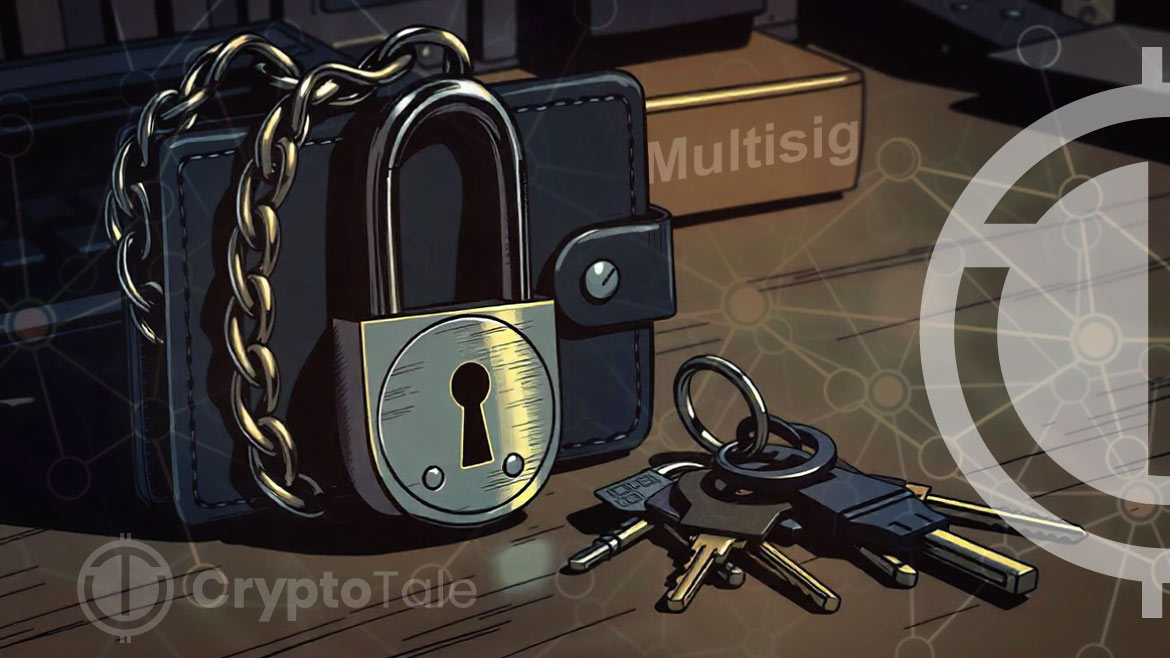
Security is of utmost importance in a world like cryptocurrency, where there are constant hacking threats. With the increase in adoption and the value of digital assets, the need for a robust protective measure has become increasingly severe. A multisig wallet is a powerful solution designed to enhance security and requires multiple approvals before a transaction can be executed. In this article, we’ll talk about multisig wallets, their types, and more.
What Are Multi-Signature Wallets?
Unlike single-signature wallets, which require only one signature to access the account, Multi-Signature wallets, also known as Multisig wallets, require multiple signatures to access the account and execute the transactions. They offer greater security against external threats and are useful for organizations, teams, and others who pool their funds and invest in crypto.
In single-signature wallets, it is easy to lose your crypto funds because of forgotten passwords or internal theft. But in a multisig wallet, the chances of this kind of scenario are very slim because it might require two or three individuals and their signatures to access the wallet. Sometimes, the exceptional security feature of multisig wallets prompts individual users to choose them instead of a single-signature wallet.
For instance, an organization with a multisig wallet has decided to sell some of its accumulated tokens. The first step would be to open the wallet; for this, two or three private keys are needed depending on the previously decided settings. These signatures would be in the hands of different individuals, and once the signatures are gathered, they can access the account and sell their coins.
India’s Best Crypto Wallets In 2024How Do Multi-Signature Wallets Function?
Multisig wallets function through smart contracts that establish the rules for transaction approval. They specify the number of signatures required to complete a transaction. There are various types of multisig wallets. They are:
1-of-2 Signatures
This is the most common form of multisig wallet, where two private keys or signatures are used to bind the wallet. Any individual can access the wallet through one of the signatures. This kind of wallet is useful for small businesses where the two partners have established trust so that any of the partners can access the wallet and transfer funds. It can also be useful as a backup in case a user loses their private key.
2-of-3 Signatures
This type of multisig wallet is quite popular, requiring two out of three signatures to execute a transaction. These types of wallets are used mostly by escrow services and custodians where one of the keys remains online, another one is stored offline, and the last one (third) is given to a security company for safekeeping.
3-of-5 Signatures
This multisig wallet requires three of the five signatures to validate transactions. It is often used in corporations where several members decide whether to approve transactions. Fund transfers are approved when more than 50% of the members consent to a decision. In this type of wallet, all signatures, except the one stored with a security company or kept in the wallet, are stored offline and distributed across different locations.
Pros of Multi-Signature Wallets
- Increased Security: Compared to the traditional single-signature wallet, multisig wallets offer a higher level of security. Since multiple signatures are needed to authorize a transaction, the risk of single-point failure is reduced. Furthermore, multisig wallets are much harder to hack than any other type of wallet.
- Transparency: This type of wallet enhances transparency by making policies, signatures, and transaction details publicly available on the blockchain. This provides a clearer view of transactions and ensures accountability if something goes wrong.
- Reduced Human Error: Human error is a common cause of lost or stolen cryptocurrency. This is especially true in cases where a single private key is lost or mishandled, and multisig wallets help mitigate the risk by requiring approvals from multiple parties before the transaction is completed.
Cons of Multi-Signature Wallets
- Complexity: Multisig wallets are a lot more complex than single-signature wallets and require more knowledge and experience to adapt. This complexity results in higher thresholds making it hard for newcomers to set up and manage the wallet.
- Transaction Delays: If you are choosing a multisig wallet for its security features, you are abandoning speed. Since multiple parties must approve the transaction, it can take anywhere from hours to days to complete. This makes it less suitable for urgent or on-the-spot transactions.
Conclusion
Multi-signature (multi-sig) wallets offer a robust solution for securing and managing digital assets, especially for organizations, teams, and individuals who prioritize security over speed. By requiring multiple signatures to authorize transactions, multi-sig wallets significantly reduce the risk of theft, hacking, and human error. The increased complexity and potential for transaction delays may present challenges. However, the benefits of enhanced transparency and shared control make multi-sig wallets an attractive choice for managing significant amounts of cryptocurrency or participating in collaborative ventures. As the crypto space continues to evolve, multisig wallets will likely play an increasingly important role in safeguarding funds.














